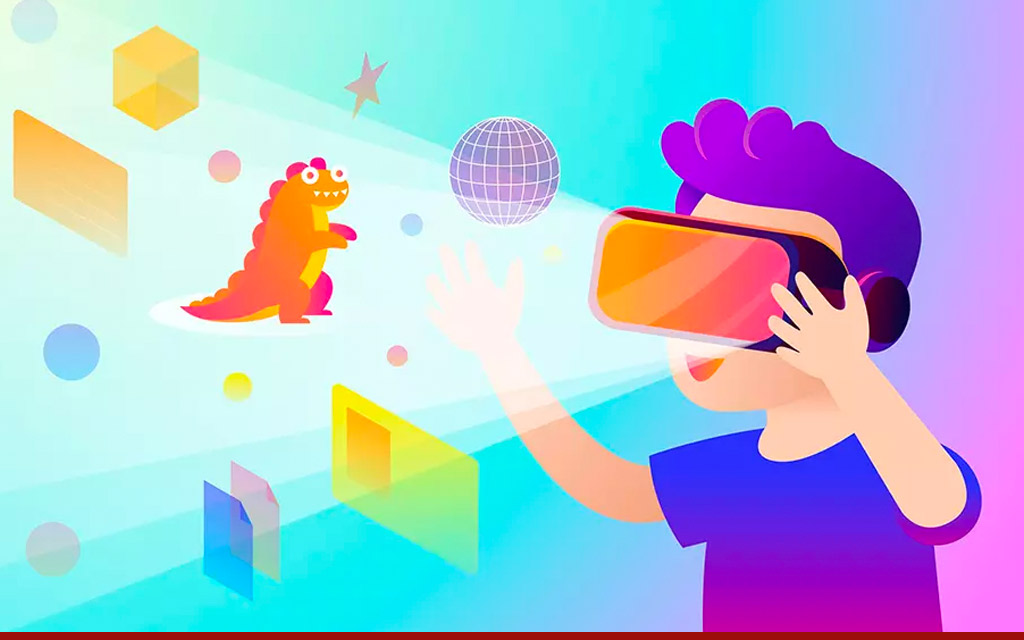Grownups have gotten so excited about what they could do in the metaverse that they’ve all but ignored the kids. And for understandable reasons.
Grownups have gotten so excited about what they could do in the metaverse that they’ve all but ignored the kids. And for understandable reasons. Kids’ online safety and personal identification is a messy business. According to COPPA rules (Children’s Online Privacy and Protection Act) you can’t market to children, hang on to their personal information, or engage them without the consent of their parents. In other words, it’s often a losing proposition for companies financially. COPPA was enacted in the early 90’s and is enforced by the FTC. The Act is long in the tooth, created for a different sort of web. Most of the answers to frequently asked questions about COPPA on the FTC’s website begin with the murky qualifier…“it depends”.
As concerns grow that Meta’s Instagram can harm kids, Congress is batting around two new bills that would offer additional protection in a more immersive social and metaverse-enabled world. The Kids Online Safety Act (KOSA) and the Children and Teens’ Online Privacy Protection Act (often called COPPA 2.0) are complementary bills designed to provide protections for a next generation of kids and teens and extend the protection to age 16 (COPPA protects only kids up to age 12).
There’s no shortage of things kids should be protected from on the evolving internet. A white paper from Common Sense Media, an advocacy group for children’s media, cautions that the dangers include physiological ones (cybersickness from wearing VR headsets, injury due to immersion in virtual worlds, and eye strain) as well as more insidious psychological ones (bullying, sexual aggression and harassment, misinformation and more).
But toy companies and kids’ media properties want in today on the metaverse goldrush. So right now they have at least two innovative options that can help them play it safe. They can create an in-game currency, the way Roblox does with its native currency Robux. Or they can create a digital NFT (non-fungible token) that has built in utility. The NFT is typically good for redeemable physical products or for services, like special events. Ultimately the metaverse is likely to be built on top of blockchains and cryptocurrencies (most commonly today the Ethereum blockchain). That will keep immutable records of what’s being purchased, collected or traded. But for now, most toy companies are avoiding that course, probably because for kids these crypto-phenomena are just too hard to understand and operate. (It will be a while before even most parents feel comfortable giving kids an Ethereum allowance. I’m sure it will happen, though.)
Meanwhile, toy companies are taking baby steps towards a metaverse–a more NFT-infused future where digital versions of their products can be created, collected and traded. It’s messy, but here’s how it’s shaking out:
LEGO
Last week Lego and Epic (developer of Fortnite) didn’t announce anything super tangible, but said that they were joining forces to create a safer world for kids and families in the metaverse. Lego joined Sony in investing a total of $2 billion in new money into private Epic to drive the effort. Lego is one of the most iconic, trusted brands in kids entertainment, while Epic, a creator of highly-graphical virtual worlds with open chats and in-game currencies, caters to a slightly older (13+) crowd.
HASBRO
Hasbro is taking a multi-pronged approach. It sells a physical board, a version of Monopoly, based on Roblox. Players move around a real-life Roblox themed board dressed as virtual avatars. Hasbro has also teamed with Minecraft, Roblox and Fortnite to enable users to play with virtual versions of its popular Nerf Blaster toy weapons.
Finally, it created Hasbro Pulse, a direct-to-consumer shop for all of its physical collectibles. It’s a place where people can create events, for example Hasbro Pulse Con, a special event with exclusive prizes and access Recently Hasbro partnered with WAX (the Worldwide Asset eXchange™), a blockchain gaming platform, to offer digital collectibles. (It caters to the ages 16 and up.) The Power Rangers NFTs, also housed on the Pulse site, are redeemable for physical, limited edition collectible Power Rangers. So, for $199, as an example, you can receive a digital token with classic Power Rangers artwork and also get the physical figure. (In a series of confusing instructions on the Hasbro site, you’re be sent to the WAX platform to redeem your NFT.)

MATTEL
Mattel Creations focuses on attracting fans of collectibles, an older audience than the audience for playing with Barbie or Hot Wheels. Mattel is betting that those who grew up on physical collections of its coveted brands, including Barbie, HotWheel, and MatchBox, will want to engage digitally. All of them offer digital NFTs at auction, which each come with a redeemable physical product. Mattel has also announced plans to auction off digital art from its HotWheels collection, sell a GaryVee Collection of physical playing cards that coordinates with his company’s NFTs. and created an NFT event around Barbie.

In all cases, the toy companies with expertise in production of physical toys are partnering with metaverse companies to create a “phygital” approach to play. Traditional toy makers playing with NFTs include MGA Entertainment’s partnership with Animoca, which is creating LOL Surprise Doll NFTS. WowWee Toys is partnering with GameFan (the largest creator of games on Roblox) to bring beloved toys like Baby Shark into the metaverse. And Baby Shark, through another set of partnerships, offers an NFT token that takes the form of a musical video.
Beyond traditional toy companies, kids social media platforms are themselves pushing into NFT territory. Zigazoo, a popular (and COPPA-compliant) social platform for kids just introduced NFTs. Zigazoo’s NFTs were created by a 13-year-old female digital artist, Nyla Hayes, who has made millions on her digital art that portrays long-necked women. The art can be purchased as digital pieces that can be shared, incorporated into videos, or used as avatars. They also have built-in utility, unlocking adventures or levers of play.

A package of these NFTs costs between $6 and $50, or kids can buy them with the in-app currency Zigabucks, earned making videos and logging into the app on multiple days. Zak Ringelstein, CEO of Zigazoo, told me he hopes to crack the kid’s NFT market by keeping fees for buying his NFTS low and shying away from digital wallets and complicated onboarding processes. “When kids and parents think of them as having the functionality of a real world trading card,” he says, “that’s when mass adoption takes place.”
Toy makers recognize the imperative to explore digital products. It’s direct-to-consumer. There are no shipping fees or supply chain challenges. They can create combos of physical and digital toys, using redeemable NFTs. They can create loyalty clubs for their NFT fans. And while minting and marketing NFTs can cost something, it’s a lot cheaper than creating physical objects and dealing with all the surrounding logistics.
So will you be buying your kids’ NFTs for the holidays? Not so fast. Sales of NFTs have been dropping steadily over the past weeks, with analysts citing everything from over-saturation to inflation to the war in Ukraine as factors. And honestly, as a parent you should expect to spend inordinate amounts of time scrutinizing the fine print. After all, you’ve got to understand whether you’re buying a toy, an entry to a game, or a piece of digital art. For your kid it won’t matter, so long as they can just have fun.
SOURCE: https://techonomy.com/the-kids-metaverse-is-sort-of-open-for-business/




